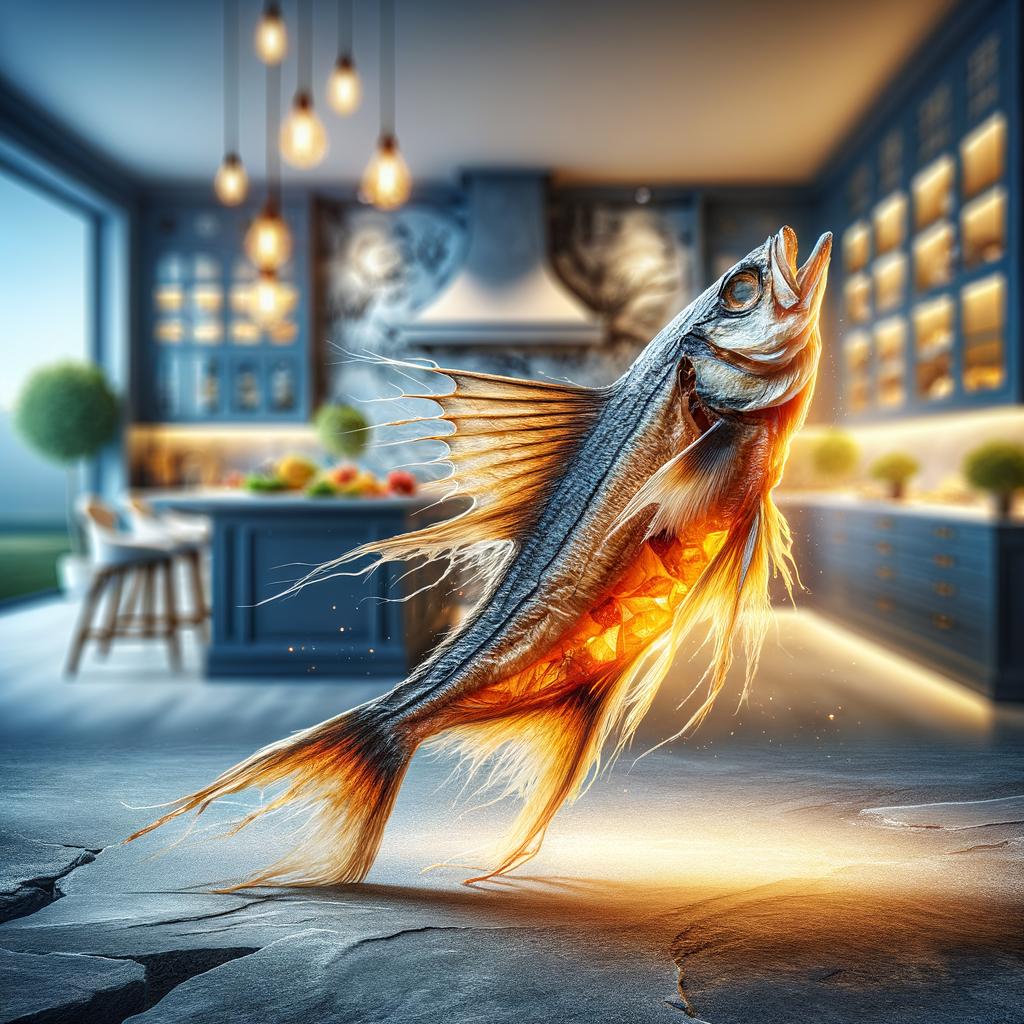Dried Pollack

Description
Dried pollack, also known as Hwangtae in Korea, is an ingredient that is as captivating as it is versatile. It's a fish that has been dried naturally through a process of freezing and thawing repeatedly over the winter months. This method of preservation gives the pollack a distinct, crinkled appearance, with a texture that is both chewy and tender when cooked. Its color ranges from a pale ivory to a deep golden hue. The flavor profile of dried pollack is unique, with a subtle sweetness underlining its rich, savory, and slightly smoky taste. What sets dried pollack apart from similar ingredients is its ability to transform in character depending on how it's prepared, whether rehydrated or roasted.
Primary Uses
Dried pollack is a staple in many Asian cuisines, particularly in Korean cooking. It's the star of dishes like Hwangtae-guk, a comforting soup that's often served during the cold winter months. It's also used in stir-fries, stews, and even as a topping for rice dishes. In Japan, dried pollack is often used in the preparation of dashi, a fundamental broth that forms the base of many traditional dishes. Beyond its culinary uses, dried pollack also has cultural significance. It's often presented as a gift during the Lunar New Year in Korea, symbolizing good luck and prosperity.
History
The history of dried pollack is intertwined with the harsh winters of Korea. The practice of drying pollack began as a necessity, a way to preserve the catch during the freezing winter months. Over time, it evolved into a delicacy, with the best dried pollack said to come from regions where the temperature fluctuates dramatically between day and night. This process of natural freeze-drying not only preserves the fish but also enhances its flavor, making it a coveted ingredient. There's a romantic notion associated with dried pollack, as it embodies the resilience and ingenuity of the people who first thought to harness the power of nature to preserve their food.
Nutritional Information
Dried pollack is not just a feast for the palate; it's also packed with nutritional benefits. It's a rich source of high-quality protein, essential for muscle growth and repair. It also contains a wealth of vitamins and minerals, including Vitamin B12, iodine, selenium, and zinc. Notably, it's an excellent source of omega-3 fatty acids, known for their heart-healthy benefits. Compared to other preserved fish, dried pollack has a lower sodium content, making it a healthier choice. Its unique preservation process also enhances the digestibility and absorption of its nutrients, making dried pollack a delicious and nutritious addition to any meal.

